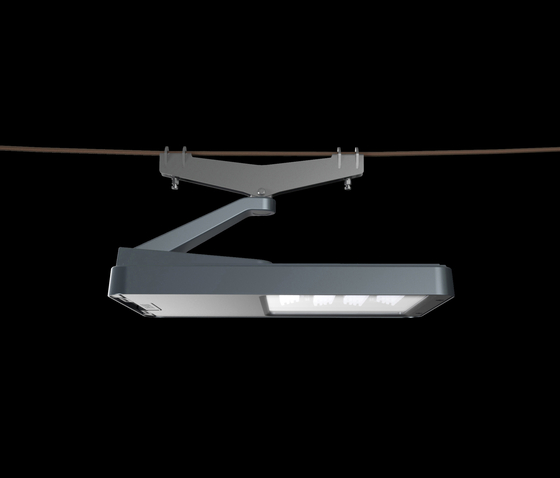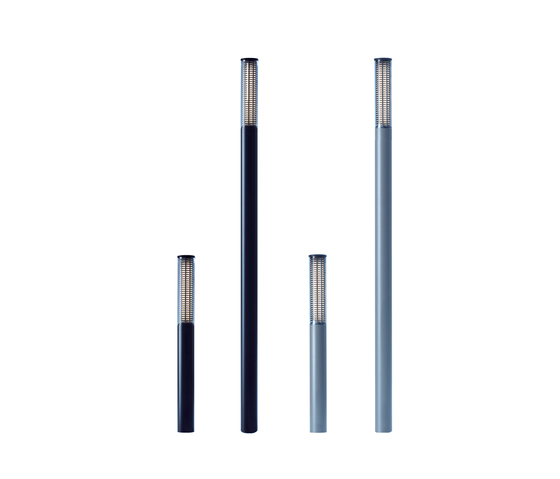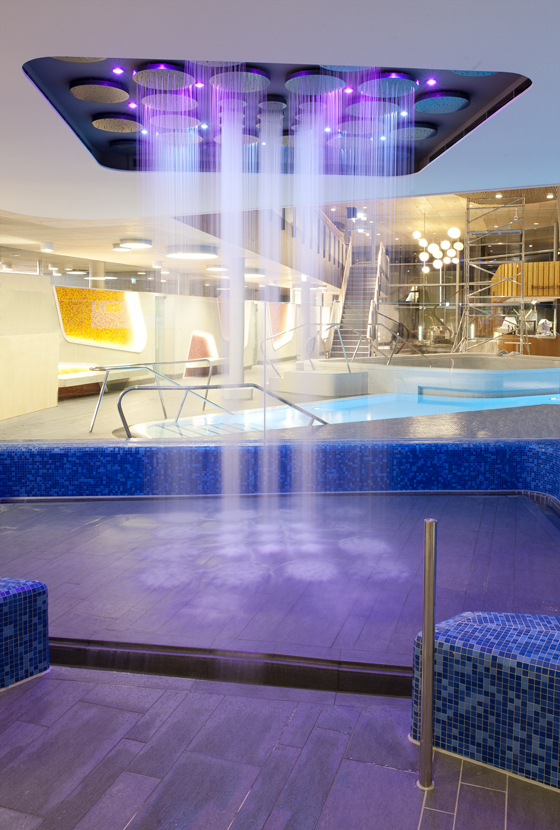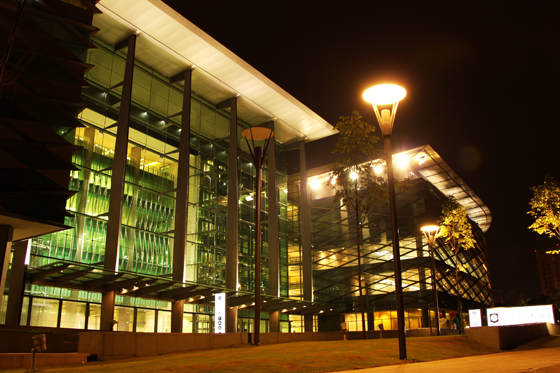Easily LED: the charms (and challenges) of a developing technology
Texto por Simon Keane-Cowell
Zürich, Suiza
20.03.13
Many hands make light work, goes the old saying. Many new LED producers also make the creative possibilities of working with such a fast-changing technology exciting, thanks to the proliferation of products they bring to the market. But, for lighting design manufacturers, an expansion of supplier choice brings with it a number of challenges. Architonic sheds some light.
....
Pioneers in LED lighting design, the Munich-based studio Ingo Maurer, headed up by the eponymous product designer, is constantly seeking new technological possibilities and formal typologies. Here, Axel Schmid's 'Jetzt' lamp
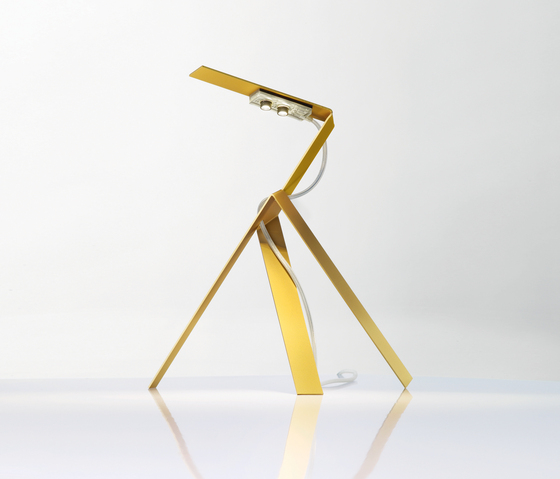
Pioneers in LED lighting design, the Munich-based studio Ingo Maurer, headed up by the eponymous product designer, is constantly seeking new technological possibilities and formal typologies. Here, Axel Schmid's 'Jetzt' lamp
×Nostalgia was better in the old days. So goes the old bon mot (which was probably funnier in the old days, too).
As the rate of technological change accelerates – or we, at least, perceive this to be the case – so the desire for the familiar forms of old would appear to grow. Take lighting, for example. Winner of the 2011 Design of the Year Award, Sam Wilkinson’s energy-efficient ‘Plumen 001’ CFL lightbulb for Hulger turns the prosaic into the poetic, introducing a rounder, more visually interesting form to a technology that tends to plough a more linear, utilitarian furrow in terms of shape. In doing so, it refers back to the now phased-out incandescent lightbulb, in all its comely fullness.
But from time to time a technology comes along that’s a real game-changer. The development of LED lighting has been so fast and has opened up so many creative and practical possibilities, the past isn’t getting much of a look in. LED is casting a spotlight on the future and it’s bright.
Ingo Maurer has also been commissioned to shape public spaces through their innovative lighting design projects. Here, LEDs are put to work at Münchner Freiheit metro station in Munich; photos Florian Holzherr (top), Tom Vack (above)
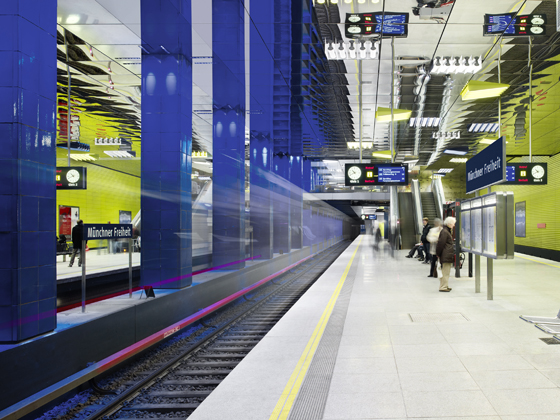
Ingo Maurer has also been commissioned to shape public spaces through their innovative lighting design projects. Here, LEDs are put to work at Münchner Freiheit metro station in Munich; photos Florian Holzherr (top), Tom Vack (above)
×In the early days of using LED technology, explains seasoned lighting designer Axel Schmid from the pioneering, Munich-based lighting-design studio and producer Ingo Maurer, ‘LED lamps looked exactly like old-type lamps – halogen and incandescent – and you had to ask yourself “Why design a lamp that looks exactly like another one?”. But this has now changed.’ LED has provided designers and manufacturers with a ‘very broad, green field’, says Schmid, one which allows creative thinking in multiple directions, off the beaten track, liberated from bonds of traditional typologies. ‘If you design a new car, you cannot go crazy because nobody would buy it. You can only change step by step. But a lamp is not as big an investment. You can innovate. Our customers are open to this.’
All roads lead to Winterthur, Switzerland, where public elements manufacturer BURRI has installed its innovative Metro LED street-lighting system, designed by NOSE, which allows a precision illumination
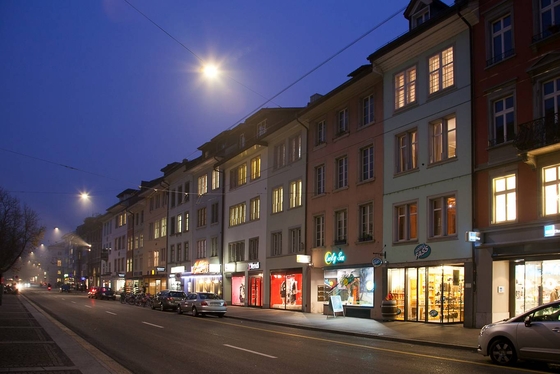
All roads lead to Winterthur, Switzerland, where public elements manufacturer BURRI has installed its innovative Metro LED street-lighting system, designed by NOSE, which allows a precision illumination
×But the green field isn’t always a rose garden. The pace of change within LED manufacturing – of the elements themselves – and the proliferation of LED products available brings with it a number of difficulties (or challenges, if you’re half-glass-full kind of person) as well as opportunities.
In those heady, high-energy-consumption days of incandescent lighting, it was all so simple. The big players, such as Phillips, Osram and GE dominated the market, so you knew who your suppliers were. But Europe-wide legislation at the end of the last decade sounded the death knell for the Edison-style light bulb, bringing to end over 100 years of incandescent illumination. The large manufacturers were then caught on the hop as LED technology leap-frogged, as it were, over the compact fluorescent lamp (or CFL), which had been assumed to be the long-term successor to the incandescent bulb. The result is a number of smaller companies have sprung up, producing a range of new LED products, with electronics brands (with no previous experience in the lighting sector) also jumping on the bandwagon.
Sculptural and utilitarian interventions in the public realm: Swiss designer Beat Karrer's LED Public Lights for BURRI
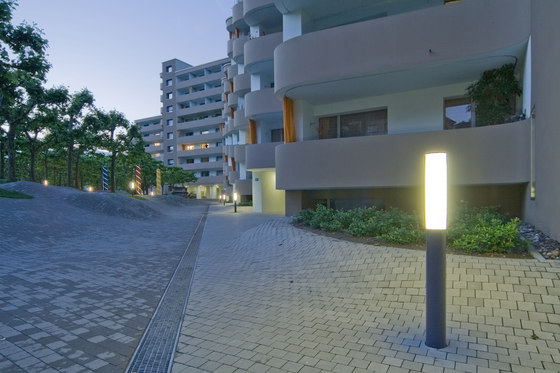
Sculptural and utilitarian interventions in the public realm: Swiss designer Beat Karrer's LED Public Lights for BURRI
×For Ingo Maurer, researching what’s out there is a job in itself. ‘It’s hard to tell what’s going to work. Going to a fair like Light + Building helps you judge, however, what there is and in which direction it’s going. Once we find the producers of lights that we would like to work with, we look at what they have every year.’ For Martin Burri, Managing Director of the long-established Swiss manufacturer BURRI public elements, supplier relationships also count for a great deal. ‘For us, only the best suppliers are in question for our products,’ he explains. ‘If you need a lot of light flux and are looking at high-energy consumption, like with street lights, you have to go for the best quality on the market and the best intensity of LED light. We have a long-lasting relationship with our partners, where quality is a bigger issue than price.’
Design studio Ingo Maurer has embraced LED technology as an opportunity to perform a shift in formal typologies. 'Why design a lamp that looks exactly like another one?,' asks Axel Schmid. Shown here, Ingo Maurer's 'Radarrr' LED floor lamp
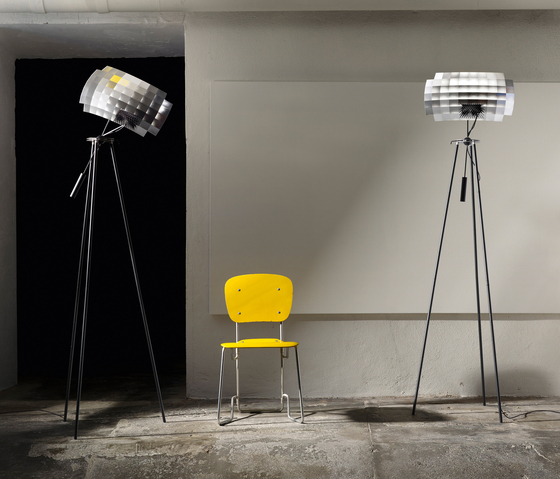
Design studio Ingo Maurer has embraced LED technology as an opportunity to perform a shift in formal typologies. 'Why design a lamp that looks exactly like another one?,' asks Axel Schmid. Shown here, Ingo Maurer's 'Radarrr' LED floor lamp
×The boom in LED production certainly offers more creative opportunity, according to go-to international lighting designer Ulrike Brandi – who has been designing with LED for over 12 years now – but such an wealth of choice doesn’t always make for an easy time of it when justifying the specification of a particular LED product to clients. ‘Comparing LEDs is really difficult,’ she explains. ‘We often get information from manufacturers that’s not really true. So when we try to convince our clients to take an LED that is a bit more expensive and they later get information from cheaper manufacturers, their reaction can be “Look. The lumen output is the same. Why should I pay more?”’ A key problem here, as Brandi, points out, is that this is industry in flux, where technical information has yet to be standardised.
In flux it may be, but Martin Burri sees his company’s relatively small size as an advantage when it comes to designing with a constantly evolving technology. Without products in their collection that involve lead times of several years before launching or minimum production runs in the tens of thousands, BURRI can respond relatively quickly to technological advances and move forward with the market. ‘Big companies have to secure their supply chain early on and are therefore not always able to offer the newest generation of LED lighting,’ argues Burri.
Go-to lighting designer Ulrike Brandi has been working at the forefront of designing with LED for over 12 years. Recently completed projects include the baths at Bad Ems, Germany
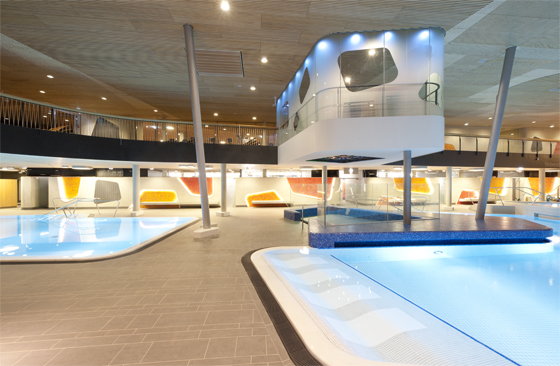
Go-to lighting designer Ulrike Brandi has been working at the forefront of designing with LED for over 12 years. Recently completed projects include the baths at Bad Ems, Germany
×Nonetheless, new technology does have an annoying habit of dating. Burri doesn’t view this as that big of a problem for his company, however, which specialises in products, systems and fixtures for the public realm. ‘There’s progress in every technology,’ he says. ‘Car engines, for example. The same with light. It becomes more efficient. But, in the professional world – street lights or tunnel lights – you’re focusing on long lifespan. You don’t focus on a quick change of light bulbs. You’re not always adapting in the professional lighting business to higher efficiency.’ That’s not say that BURRI isn’t up to speed on the latest developments. If a new, more efficient LED comes out while you’re in the product-development phase of a project, ‘you integrate it into the process. With existing products, it’s no problem. They still work. Perhaps a little bit less efficiently. But a lot of our products are modular and can be updated.’
New technology, new forms: two recent Ingo Maurer-produced LED lamps speak emphatically of innovation. 'Zak Zarak' by Lutz Pankow and Ingo Maurer (top) and 'My New Flame' by Moritz Waldemeyer (above)
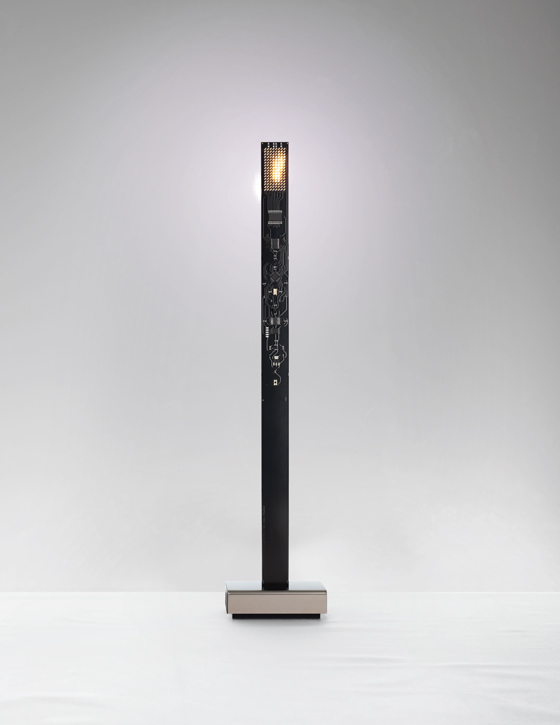
New technology, new forms: two recent Ingo Maurer-produced LED lamps speak emphatically of innovation. 'Zak Zarak' by Lutz Pankow and Ingo Maurer (top) and 'My New Flame' by Moritz Waldemeyer (above)
×Ingo Maurer sees the pace of technological change in the LED market as both exciting and challenging, as Axel Schmid explains. ‘With LED, there aren’t sockets anymore that can take different kinds of bulbs the way there used to be.’ The problem – if that’s the right word – is LED’s advanced technology, which means that each type of LED element involves a specific set of data. Plugging an element into a lighting product that was designed for a different kind of LED won’t work. ‘You have to change the driver, change the way it’s fixed because they vary quite a lot in sizes and then, of course, if you have optics involved like reflectors or lenses, these also specifically match a certain kind of surface or LED shape.’ There’s a real decision to be made here about how far a manufacturer should go in reworking an existing design when the electronic elements on which it relies have been superseded. As Schmid puts it, ‘Should we change the outdated LED or should we not only change that but also other features of the lamp and design more or less a new lamp?’
Continuous technological change, meanwhile, can present problems in terms of technical know-how for those tasked with installing LED lighting. ‘They have to keep learning,’ explains Brandi. ‘And a lot. Construction processes often call for the cheapest labour and doesn’t really look at what installers have to deliver and what they have to know. The result is sometimes that clients think at the end of a project that it’s failed or doesn’t meet their expectations.’
No shady dealings at the Bank Negara in Kuala Lumpur, Malaysia, where international lighting designer Ulrike Brandi has explored the creative possibilities of LED technology in creating nuanced white light
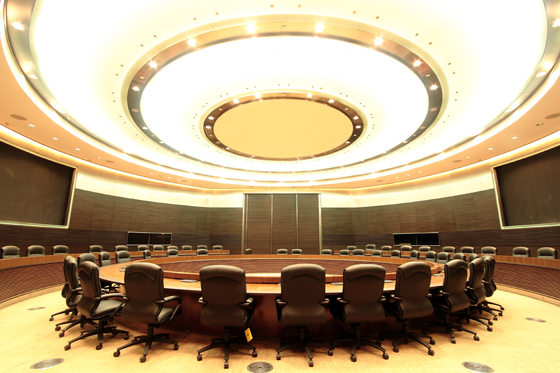
No shady dealings at the Bank Negara in Kuala Lumpur, Malaysia, where international lighting designer Ulrike Brandi has explored the creative possibilities of LED technology in creating nuanced white light
×If you were to map the power relations between supplier and small- or medium-sized lighting-design manufacturer in the context of LED, it might seem that LED suppliers are calling more of the shots, deciding who they work with, what kind of new products they introduce into the market, and when. Indeed, both Burri and Schmid speak of the relative lack of buying power that they have due to their size. But that doesn’t mean that there isn’t a collaboration of sorts that can’t be achieved with smaller LED producers, who are open to working creatively with studios like Ingo Maurer – as long as it makes commercial sense. ‘We can ask companies that deal with single electronic parts,’ explains Schmid, ‘to design kind of circuit boards that house LEDs in certain positions, in certain configurations, in certain technical arrangements, so we can add whatever we want to have close by the light, be that a reflector, lens, colours or flaps.’ In this way, the lighting designer pushes the supplier to innovate. ‘We can ask these small producers for prototypes for doing it this way and that way. Custom-made configurations.’
The busy subway at Munich's Marienplatz is receiving the Ingo Maurer treatment, with bright LED lighting inlaid into high-gloss red ceiling
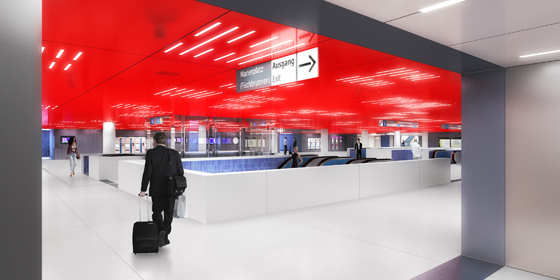
The busy subway at Munich's Marienplatz is receiving the Ingo Maurer treatment, with bright LED lighting inlaid into high-gloss red ceiling
×BURRI is also looking at how it can harness innovation. The company has recently been presented with the latest research of one of its suppliers – albeit at laboratory stage – and it promises to double current LED efficiencies. So committed is BURRI to harnessing the latest technology and processes, moreover, that it has decided to bring its light-engineering and electronic-design activities in house for the first time. Ingo Maurer, meanwhile, is looking forward to a real paradigm shift in LEDs, whereby they not only start to change in size and shape, but also begin to develop features that change the possibilities of application. ‘Underwater usage or cast in something. All these possibilities that come from a different kind of light-making. I really hope the creativity is there on the part of the companies that make these tiny light-emitting things.’
But perhaps it’s Brandi who’s grasping the future most emphatically with the recent launch of her Brandi Institute for Lighting and Design, the first international training programme for lighting design, which marries theory with much-needed praxis. Created in part as a corrective to what Brandi sees as a lack of practical skills among lighting-design graduates, ‘strengthening their backs’ as she puts it, the institute also functions as a platform for a greater dialogue between creatives and industry. ‘If people from industry were to understand better how the design process for a building works and, on the other hand, lighting designers understand more how the development of a product works, we would have it so much easier and could deliver so much more,’ she says. You heard her, people. Step into the light.
....




